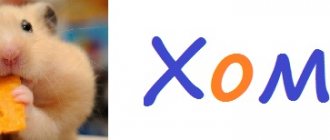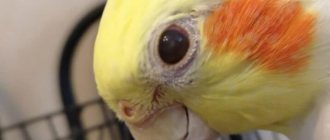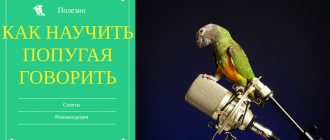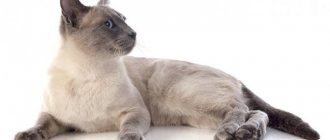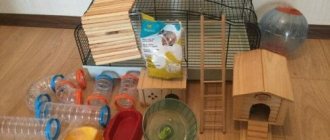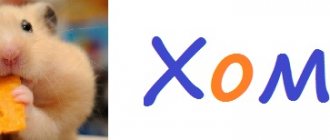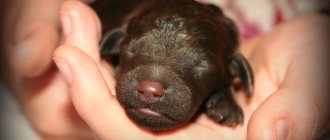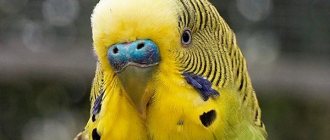Here we discuss the methodology of how to teach a parrot to speak, as well as 7 key factors that influence the effectiveness of teaching conversation. It is worth paying special attention to these factors, because... They are the ones who make a wonderful teacher out of one person, and a very bad one out of another. The advantages of the presented approach are that even if you do not teach conversation, the classes will help to establish contact and form a good relationship with the parrot.
A number of owners have a question about whether it is possible to teach a parrot to speak at all. It depends on the type of bird, its personality and the owner's ability to act as a teacher. The most popular talking feathered pets are wavy, gray, necklace, cockatoos, amazons and macaws. Some species, such as cockatiels or rosellas, are capable of learning one or two words in rare cases, but they are good at reproducing various sounds and melodies.
Why do parrots talk
The speech apparatus of birds is similar to that of humans. Their lower larynx performs the same function as our vocal cords. Birds, accepting a person into their “flock”, try to match him as much as possible and reproduce similar sounds.
The frequency of a parrot's voice is more similar to a woman's, so sometimes a parrot can imitate a man's speech in a rather punning way. By the way, some pets may try to remember words because they know that in this case a person will pay attention to them. Surely, the parrot values attention to his person above all else . This is a great tool in the hands of those who want to understand how to train a parrot to speak the fastest.
How to make a parrot say "Hello"
Step 1: Say it often. The main secret: repeating the same word many times. You need to say the word as clearly and often as possible while near the bird. The more times he hears a word, the more likely he is to remember it. This is why some parrots can surprise guests with profanity. When you pass the cage, stop for a moment to say, “Hello . Even if he doesn’t answer you, then you have laid this word in his memory - you have put a “brick” into the first stage.
Step 2. One-on-one. Of course, it may take a little longer than you planned: “Moscow was not built right away.” Try to allocate 15-20 minutes every day during the lesson for individual training in birds. Move him to an area that is unfamiliar to him (for example, to another room).
Say the word slowly so that the parrot understands what you are saying to it. After talking to him for a while, give him a chance to respond. Keep repeating this day after day, and your bird will say “Hello” to you when you least expect it!
Watch the wavy boy say “Hello”:
Step 3. Reward. When the bird says the cherished word, be sure to encourage it. Positive reinforcement – long term into future lessons: it will be one of the most valuable tools in learning. Immediately after the first: “Hello” from the bird, treat him with a tasty treat, praise him, show him how good he is! Treats pieces of apple, banana, pear, carrot or celery are suitable rewards for most parrots peanuts _ Keep treats on hand and within easy reach.
What not to do while studying
Wrong actions can forever discourage a parrot from mastering speech techniques. To avoid annoying mistakes, you must follow the following instructions:
- do not torment the bird with lessons when it is sick, anxious or hungry;
- do not conduct classes in a bad mood;
- do not choose complex words and phrases, start learning with a simple word;
- do not raise your voice at your pet, do not scold him and communicate only in a gentle, friendly tone;
- Do not teach a lesson with the TV on or listening to music;
- do not ignore your pet’s wishes if he clearly makes it clear that he is tired and does not want to exercise anymore.
It is very important to observe the parrot. By his behavior, he often demonstrates his willingness to communicate unscheduled. If a bird sits on your hand or shoulder, seeks attention, or puts its beak on its lips and mutters, you need to willingly support the game and “talk” with your pet. The more time you can spend together, the faster he will talk.
When and how can you teach a parrot to talk?
A kiss is a testament to love in the bird world too
. As with training any animal, the best effect will be achieved when training your pet when it is young, healthy, and has trust in you. Training should become part of the routine, but at the same time, it is better to keep the session short so that the bird does not get bored.
In the wild, birds prefer to socialize in the evening and morning , so this time is ideal for training. Before you start, make sure that the room is quiet, there are no extraneous noises, other animals and birds are removed from the room (it is quite problematic to train two parrots at once, so if you want to understand how to teach lovebirds to talk, then everything is simple - train them separately).
- Show the bird that it is loved. In nature, birds show their love for each other by gently rubbing their necks. You can gently touch your cheek to the bird’s neck while saying, “I love you,” and then the bird will associate these words with what you are saying to it. Keep repeating this process and eventually lightly touch your lips to the bird's beak.
When you kiss the beak, say " Kiss " and over time the bird will understand that this word also refers to the love you share.
This step can be broken down into several steps, depending on your learning skills. Be patient - it may take more than one week or month.
The first few words are the hardest to remember, the very first sign that the bird will speak is unintelligible muttering . It will continue to practice on its own without you, so when you hear the bird muttering a word, repeat it clearly.
- Gradually introduce words and phrases in context so that the parrot begins to understand them. Sometimes this happens automatically, even if you are not aware of it. For example, when the phone rings , you pick up the receiver and say: “ Hello .” The parrot, like a sponge, absorbs this information, and over time will begin to say: “Hello” when the phone rings. Or even imitate the sound of a phone to encourage you to say "Hello" to it!
So, to use this training technique, prepare a few phrases that you would like your bird to understand and use in the future. Use a high-pitched, excited tone when you leave the house every morning, saying “good morning” or “rise and shine.”
At night, when you close the cage or turn off the light, say “good night”, and soon the bird will begin to repeat this call. Move on to the next word or phrase when fully studied .
Name the foods, vegetables, fruits that he eats, and use special designations for the objects of his games. For example, if he likes to play with a chain of keys, then indicate that it is a “chain of keys” when the bird turns its attention to this object. Then, when she starts repeating the word, give her a chain to enhance the effect. small and bright objects for this purpose .
- Make sure your parrot is in front of you when you teach him to talk so that he can watch you speak.
Birds learn to communicate using imitation and imitation. In addition, this is a sure way to attract the bird's attention.
A common mistake is to teach whistling earlier . This mistake is made especially often by people who want to understand how to teach a cockatiel to speak. After all, the cockatiel is the biggest fan of whistling. Wait until your parrot has acquired at least a minimum vocabulary before teaching him to whistle. Once he learns to whistle , he usually ignores almost all words , preferring to whistle.
Helpful advice: birds love attention, but being ignored upsets them. So if you notice bad behavior during a workout, just turn around and walk away for a few seconds. Most likely, the bird will understand that this is not the reaction it would like.
The bird remembers words and phrases well that will certainly amuse you and your guests:
- Hello
- Hello
- Do you want a nut?
- Good boy
- I want to come
- Come here
- Have a seat
- Love you
- Hi baby
- Bye bye
- Have supper
- Time to sleep
- Help! They turned me into a parrot!
- I can talk, can you fly?
- I'm not a bird, birds don't talk!
Answers to frequently asked questions
What words are best to learn with a bird?
As for what words, phrases and expressions you can teach your budgie, you should always start with easy material. That is, the bird should be taught simple words. As a rule, they begin to teach budgies to speak by learning the bird's name or simple words consisting of two syllables , such as “Hello.” To begin with, select short words that contain sounds: “r”, “ch”, “sch”, “sh”. If you can somehow emotionally interest a bird with a three-syllable word and make the bird want to learn it, then why not. If the bird really wants to, then even at the initial stage it will be able to master a more complex word of three syllables, such as “gorgeous,” and in the future will actively use it in its speech.
Is it possible to diversify the vocabulary of budgerigars and how to do it?
Yes, you can teach them to say more words as budgies have a very good memory. Literally after the first few words learned, it will be possible to simultaneously teach the bird two or more words. This will help you see which phrases your feathered friend likes more and which ones less. Based on this, you can adjust the training program for your talking budgie.
Can a talking budgie forget all its words?
Undoubtedly! If the parrot does not practice , then gradually he will lose his skills. The clarity of pronunciation of words will become worse and worse each time. Ultimately, this will lead to the fact that the pet will no longer be able to pronounce the words it once learned. To prevent this from happening, we need to talk. So regularly repeat the words you have covered.
Another situation may arise. You trained a parrot who lived alone. Over time, you acquired other parrots and placed them all together . If in this case your budgerigar has become silent, this is due to the fact that he finally has the opportunity to communicate with his relatives in his native language. They will probably only speak to each other in birdlike for a while.
What if the budgie doesn’t say anything other than muttering?
Is it possible to teach such budgies to speak? Will there be progress? Apparently, the fact that your feathered pet is mumbling is a little progress . This means that you have moved on and are somewhere halfway to complete mastery of the word. Therefore, do not stop conducting classes under any circumstances! Be patient, and very soon your pet will be able to clearly pronounce the word being studied.
How many words can a budgie learn?
If you work hard with your parrot, he will be able to remember dozens of words and will even combine them into sentences. Even though such capable polyglots may come up with meaningless sentences, they are very funny and undoubtedly amuse the owners. There are also silent parrots. They prefer to just tweet. Thus, not everything depends on a competent approach to classes. Much is also influenced by the predisposition and character of the pet itself.
Age matters
Training can begin at any age, even at a very young age. A parrot may be too young to speak, but not to remember words! If you start talking to a newly fledged youngster , the trust and effectiveness of communication will be higher.
Birds of this age bond easily with people and have the confidence needed for vocal interaction. Be gentle, kind and patient, and these birds will quickly learn to trust and respond to you.
Of course, while they are “cackling” asking for food, they are unlikely to utter words. But as you get older , you will see that your efforts were not in vain. Experimenting with words, flapping wings, and first attempts at flight often occur around the same age.
It is best to teach a parrot words from childhood
The chicks will tilt their heads, listen carefully to you, and recognize words even if they are too small to repeat them. By the time small parrots reach 3-6 months and large parrots 6-12 months , they begin to repeat words and phrases.
If you buy that is not too young and teaching it to talk will be difficult, if not impossible . Birds must first learn to trust people. Many never gain trust in a person. They require a longer period of socialization than the chick.
A parrot's abilities may also depend on its gender. For example, among wavy birds, only males speak. At the same time, the vocabulary will most likely be modest. However, the budgerigar Puck, who was included in the Guinness Book of Records, knew 1,770 words.
Amazing - incredible
Parrots first came to our mainland in 1840. These marvelous birds were brought by an employee of one of the London museums. The first Soviet ornithologist to teach his pet to speak more than 60 words was A. Simonov, and this event happened in 1958.
Today, many of us think that parrots can’t say anything other than the phrases “Stupid ass” and “Gosh is good.” But is it? This is what history tells us:
- Frau Ragotzi, a bird lover from Germany, kept a budgerigar and a goldfinch in neighboring cages. The birds became so friendly that after the goldfinch’s death, the parrot reproduced its “Tyak-Tyak” sounds.
- History also knows of a wavy bird that was able to repeat the gurgling sounds when opening a bottle. And the parrot always answered “Come in” to a knock on the door.
- The parrot of the Russian art critic Khazin, when the cage was kept closed for a long time, shouted: “The birds are all on a branch, and I, poor thing, am in the cage. Open me up! What injustice!
- But the most famous was the parrot of Ukrainian nationality Frantik. His breeder managed to teach variable dialogues. At an early age, the bird’s vocabulary already numbered more than 300 words, which allowed it to communicate with its owner on equal terms: offer food, ask for food, and even tell excerpts from fairy tales.
An express method for learning your name in 5 minutes a day
The best way to quickly teach your bird to say its name is to include it in a sentence that it already knows. Once the bird has passed the first step and learned to say words, start adding its name to the word.
For example: “I love you, Polly,” or “Hello, Polly” if she already knows the word “Hello.” Repeat this phrase often throughout the day and during activities. 2 sessions a day for 5-10 minutes at a time are much more effective than longer sessions once every few days. The bird will forget what you are trying to teach it if you are not consistent. In just a few days, there is a chance you will hear the name from your pet’s beak!
Briefly about the main thing
In order for your feathered pet to speak as early as possible, you must adhere to the following recommendations:
- Adaptation to a new society. Tame the wavy in your hands, let him feel that he is safe.
- Separation from the pack. Try to make the parrot accept you as one of its flock.
- Regularity of classes. “Repetition is the mother of learning” - so don’t be lazy and give your poultry attention and time at least twice a day.
- Diversify your training. As soon as the bird learns one word, immediately offer him another or teach him a short phrase. This way the parrot will not get bored with activities.
- Poultry is good at words that contain the letters “ch”, “sh”, “sch” and “r”.
- Don't force an activity. If your pet flies off to conquer a room, you shouldn’t run after it and repeat a word or phrase.
- A “delicious” end to training. Motivate your bird with tasty food waiting for him after an effective session.
We wish you success and your pets a good mood!
When the parrot speaks
On average, parrots begin to speak very well (subject to regular training) from 3 months to a year from the start of training. Of course, this depends on her ability to learn conversation, her character, ability and desire to speak. Your vocabulary will gradually expand if you continue to spend enough time with your pet.
Remember that when a parrot starts talking , it quickly begin to remember and repeat everything that it periodically hears, incl. and conversations between household members, swearing among themselves, or even constantly calling the cat for dinner. All this will be repeated without hesitation!
Review of Computer Methods for Android
1. “Phrasebook for parrots.” For free.
The program is distributed free of charge. There are several levels of difficulty. List of words to remember: Hello. Birdie. Wonderful person. Hen. I love. Guard. Be healthy. I love you.
The program automatically repeats the word every few seconds. It is best to use the program in half-hour sessions to obtain effective results.
2. “Conversational genre for parrots.” Paid.
You can use the program to teach birds words, phrases, and various sounds. You can install and use the program on a desktop computer or laptop. Along with the program, you acquire a basic set of words and phrases that are best suited for first training. It is best to use the program periodically, several times a day for 5-8 minutes.
3. "Training Cockatiel." Free. In English.
Do you want your parrot to learn to say your favorite phrase? The program provides the opportunity to record and use custom sounds recorded through the voice recorder application during training.
4. “Dictaphone.” For free.
There is nothing easier than recording or speaking words into a voice recorder or recording phrases into mp3, which the bird will teach instead of you. One of the disadvantages is the lack of communication with the bird, but trust is an important component of successful training!
5. Methods that can be found on YouTube. For example, watch a video on how to teach a parrot to talk. You can simply play this video for your pet when you leave home:
What can you teach your feathered pet?
We present to your attention a sign that we have filled with interesting phrases and words, ideal for a budgie.
| Phrases | List of words |
| Protect the environment | |
| be healthy | |
| Behave yourself | |
| Turn on TV | |
| Everything will be fine | |
| Where's my present? | |
| Gosha is good | |
| Let `s play | Hello |
| Give me money | |
| Give me some food | |
| Let me kiss | |
| Give me some champagne | |
| Two by two is four | |
| Good morning | |
| Good evening | |
| Close the window | |
| How are you doing | Guard |
| Who's there? | Come il faut |
| Buy some bread | |
| I'm tired of you | |
| Not a penny in my pocket | |
| Well, brother, goodbye | |
| Got drunk again? | |
| I want some beer | Peach |
| Bye sweet | Piasters |
| Show me the diary | It's time to sleep |
| Chase the cat away | Hello |
| Birdie lays an egg | Birdie |
| Are you happy with me or not? | |
| Good night | |
| I like you | |
| Want to eat | Ciao |
| I want to drink | |
| I'm a green parrot | |
| I'm watching you |
If you received a parrot that is already talking, then in order to learn its vocabulary, you need to wait a little time.
Let your feathered pet adapt to its new home and new owners. And as soon as this happens, in just a few days the wavy will tell you the entire list of words that it knows!
